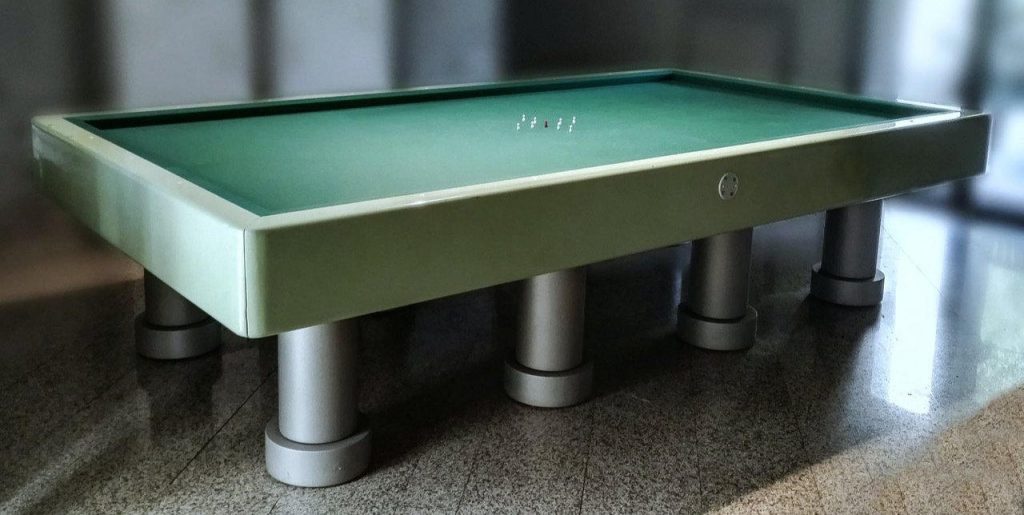“…Bolidismo is like a boiling pot, where languages move fast with the acceleration that circulates the information, accepting the times of technology and fashion. It is the expression of a new concept of speed, no longer the mechanical one, but electronic (…) In Bolidist projects, the object is born with a unitary process of syntax and semantics.”
Cristina Morozzi
(Dizionario del design italiano curated by Anty Pansera, Cantini Editore, Milan, 1995)
 ERASTUDIO DESIGN GALLERY brings to DESIGN MIAMI/ – Miami Beach, December 4-8, 2019 – the pool table designed by Remo Buti in 1986, (m 3.10 x 1.65 x 0.80).
ERASTUDIO DESIGN GALLERY brings to DESIGN MIAMI/ – Miami Beach, December 4-8, 2019 – the pool table designed by Remo Buti in 1986, (m 3.10 x 1.65 x 0.80).
The Bolidista Movement was founded in 1986 by 16 architects graduated at the Faculty of Architecture of Florence, all former alumni of Prof. Remo Buti (already co-founder in the seventies of the radical architecture group “Global Tools”), even if some projects had already been realized in previous years (from 1983) and events that expressed a common sensibility among the various designers like Remo Buti, Stefano Giovannoni, Guido Venturini, Angelo Caramia, Massimo Iosa Ghini, Daniele Cariani, Maurizio Castelvetro, Massimo Mariani, Ernesto Spicciolato.
At the base of the “bolidista thought” there are the concepts of communication, movement, lightness, multiplicity, becoming, action. In design, this leads to an initial symbolic predilection for dynamic forms intended not only as “shaped by the wind” but also as organic forms, restoring to the objects personality and uniqueness typical of living forms, industrializable thanks to the evolution of technology. Significant elements in the Bolidist project are also the “Mediterranean” element, the “culture of extremes” (purism and hyper-decorativism) and the concept of play.
Everything is in any case related to the new formal and spiritual needs of a revolutionary model of society dominated by the presence of telematic means (the “fluid city”) of which the group proposes itself as a postmodern vanguard, a witness of the final “mechanical” phase of the civilization of machines, in transition towards the “electronic” phase, characterized by communicative and symbolic simultaneity.
